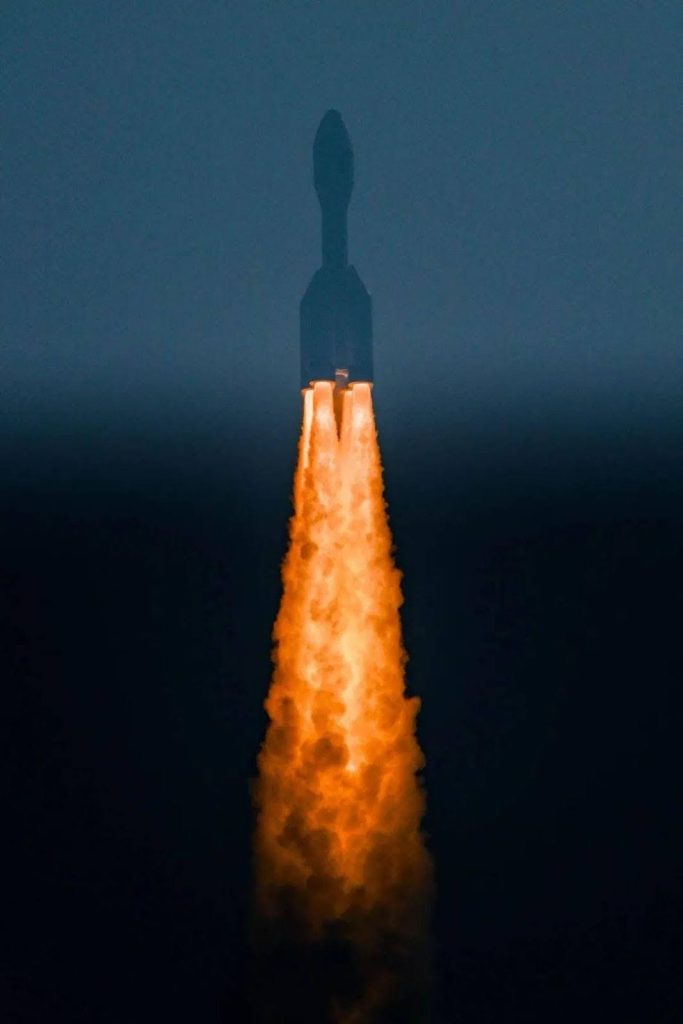Metal 3D printing technology from Bright Laser Technologies (BLT) has played a key role in the development of Chinese aerospace firm Orienspace’s Gravity-1 Y-1 commercial carrier rocket.
Said to be the “world’s largest solid rocket,” Gravity-1 delivered the Yunyao-1 No. 18-20 satellites into orbit earlier this month.
The rocket, which boasts a carrying capacity of 4 tons/500km SSO (Sun-Synchronous Orbit), can carry more than twice that of China’s previous largest solid rockets, CAS Space’s Kinetica-1 and China Rocket’s Jielong-3.
Gravity-1 incorporated a range of components fabricated using BLT’s Laser Solid Forming (LSF) 3D printing technology. These large-scale, structural components reportedly featured complex geometries that are prone to deformation.
Traditional manufacturing methods would face high processing difficulty, long production cycles, and low material utilization when producing these parts. According to BLT, LSF technology overcomes these challenges, allowing the parts to be rapidly produced to a high standard.

BLT technology enables Gravity-1 launch
Since its launch in 2011, BLT has grown a customer base of over 30 companies within the commercial aerospace industry, and has made notable progress in developing its Selective Laser Melting (SLM), Wire Arc Additive Manufacturing (WAAM), and LSF processes.
The firm has previously assisted commercial clients i-Space and LandSpace in developing and 3D printing key aerospace components. At Formnext 2023, BLT exhibited a 3D printed thrust chamber injector for i-Space’s JD-2 100-ton liquid oxygen methane engine.
In its latest project with Orienspace, BLT’s LSF 3D printing technology achieved near-net shaping of large-sized complex-shaped components.
During the project, BLT leveraged multiple 3D printers simultaneously to produce over 30 components for the Orienspace Gravity-1 rocket. The parts exhibited high consistency in quality performance, and met the stringent requirements required for the rocket’s commercial launch.
In fact, testing confirmed that the room temperature tensile mechanical properties of the 3D printed TC11 titanium alloy parts were reliable. The parts possessed a tensile strength of ≥1060 MPa and a yield strength of ≥885 MPa. These results met the necessary technical requirements for the rocket, which launched to orbit on January 11.
According to BLT, its metal additive manufacturing technology reduced the production cycle and cost of the components, shortened development time, improved material utilization, and reduced manufacturing costs.
The company claims that, after the solidification process, the cost and production cycle of these aerospace parts “meet the demands for mass production.”

Metal 3D printing boosts space rocket production
The use of metal additive manufacturing is growing in the production of space rockets. Last year, NASA, the US National Aeronautics and Space Administration, successfully 3D printed and tested a rocket engine nozzle.
Developed as part of NASA’s Reactive Additive Manufacturing for the Fourth Industrial Revolution (RAMFIRE) project, the 3D printed rocket engine nozzle was developed in collaboration with material developer Elementum 3D. As part of this collaboration, the two partners created a weldable aluminum that possesses the necessary heat resistant properties needed for use on rocket engines.
The aluminum possesses low densities, allowing for the production of high-strength, lightweight components. Therefore, NASA claims that its 3D printed RAMFIRE rocket engine nozzle is lighter than conventional nozzles, enabling deep space missions that carry heavier payloads.
Elsewhere, Edinburgh-based private rocket manufacturer Skyrora has developed and tested an updated design of its 3D printed 70kN rocket engine. Produced using the company’s Skyprint 2 3D printers, Skyrora reportedly cut production times by 66% and costs by 20%.
Set to be used in the company’s first commercial orbital launch, the rocket engine features an improved cooling chamber which optimizes cooling efficiency, extending the engine’s life cycle.
Subscribe to the 3D Printing Industry newsletter to keep up to date with the latest 3D printing news. You can also follow us on Twitter, like our Facebook page, and subscribe to the 3D Printing Industry Youtube channel to access more exclusive content.
Are you interested in working in the additive manufacturing industry? Visit 3D Printing Jobs to view a selection of available roles and kickstart your career.
Featured image shows Orienspace’s Gravity-1 Y-1 rocket. Photo via Bright Laser Technologies.

